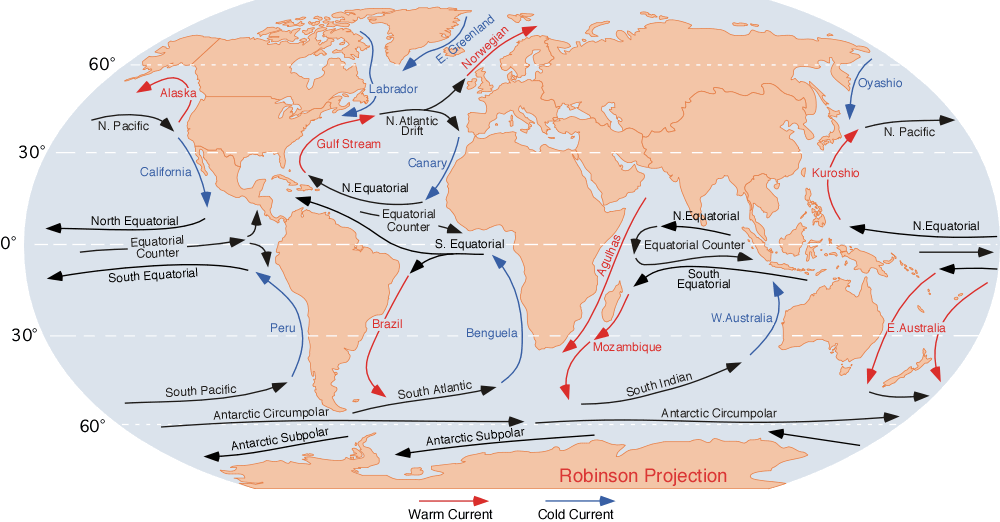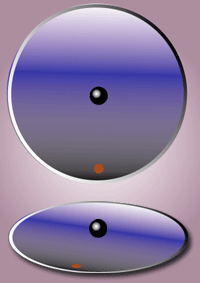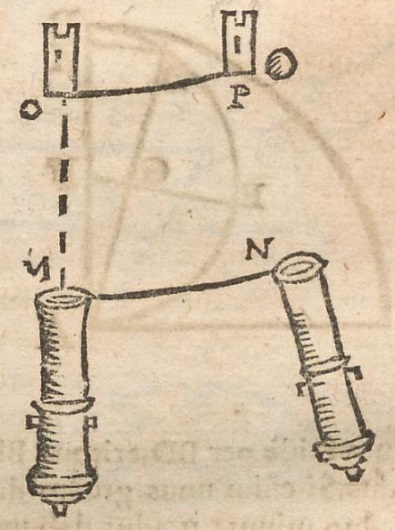|
Gyre
In oceanography, a gyre () is any large system of ocean surface currents moving in a circular fashion driven by wind movements. Gyres are caused by the Coriolis effect; planetary vorticity, horizontal friction and vertical friction determine the circulatory patterns from the '' wind stress curl'' (torque). ''Gyre'' can refer to any type of vortex in an atmosphere or a sea, even one that is human-created, but it is most commonly used in terrestrial oceanography to refer to the major ocean systems. Gyre formation The largest ocean gyres are wind-driven, meaning that their locations and dynamics are controlled by the prevailing global wind patterns: easterlies at the tropics and westerlies at the midlatitudes. These wind patterns result in a wind stress curl that drives Ekman pumping in the subtropics (resulting in downwelling) and Ekman suction in subpolar regions (resulting in upwelling). Ekman pumping results in an increased sea surface height at the center of the gyre and ... [...More Info...] [...Related Items...] OR: [Wikipedia] [Google] [Baidu] |
Walter Munk
Walter Heinrich Munk (October 19, 1917 – February 8, 2019) was an American physical oceanographer. He was one of the first scientists to bring statistical methods to the analysis of oceanographic data. Munk worked on a wide range of topics, including surface waves, geophysical implications of variations in the Earth's rotation, tides, internal waves, deep-ocean drilling into the sea floor, acoustical measurements of ocean properties, sea level rise, and climate change. His work won awards including the National Medal of Science, the Kyoto Prize, and induction to the French Legion of Honour. Munk's career began before the outbreak of World War II and ended nearly 80 years later with his death in 2019. The war interrupted his doctoral studies at the Scripps Institution of Oceanography (Scripps), and led to his participation in U.S. military research efforts. Munk and his doctoral advisor Harald Sverdrup developed methods for forecasting wave conditions which were used in ... [...More Info...] [...Related Items...] OR: [Wikipedia] [Google] [Baidu] |
Ekman Transport
Ekman transport is part of Ekman motion theory, first investigated in 1902 by Vagn Walfrid Ekman. Winds are the main source of energy for ocean circulation, and Ekman transport is a component of wind-driven ocean current. Ekman transport occurs when ocean surface waters are influenced by the friction force acting on them via the wind. As the wind blows it casts a friction force on the ocean surface that drags the upper 10-100m of the water column with it. However, due to the influence of the Coriolis force, Coriolis effect, as the ocean water moves it is subject to a force at a 90° angle from the direction of motion causing the water to move at an angle to the wind direction. The direction of transport is dependent on the hemisphere: in the Northern Hemisphere, northern hemisphere, transport veers clockwise from wind direction, while in the Southern Hemisphere, southern hemisphere it veers anticlockwise.Colling, pp 42-44 This phenomenon was first noted by Fridtjof Nansen, who reco ... [...More Info...] [...Related Items...] OR: [Wikipedia] [Google] [Baidu] |
Wind Stress
In physical oceanography and fluid dynamics, the wind stress is the shear stress exerted by the wind on the free surface, surface of large bodies of water – such as oceans, seas, estuary, estuaries and lakes. When wind is blowing over a water surface, the wind applies a wind force on the water surface. The wind stress is the component of this wind force that is parallel to the surface per unit area. Also, the wind stress can be described as the flux of horizontal momentum applied by the wind on the water surface. The wind stress causes a deformation of the water body whereby wind waves are generated. Also, the wind stress drives ocean currents and is therefore an important driver of the large-scale ocean circulation. The wind stress is affected by the wind speed, the shape of the wind waves and the atmospheric stratification. It is one of the components of the air–sea interaction, with others being the atmospheric pressure on the water surface, as well as the exchange of energy a ... [...More Info...] [...Related Items...] OR: [Wikipedia] [Google] [Baidu] |
Ocean Current
An ocean current is a continuous, directed movement of seawater generated by a number of forces acting upon the water, including wind, the Coriolis effect, breaking waves, cabbeling, and temperature and salinity differences. Depth contours, shoreline configurations, and interactions with other currents influence a current's direction and strength. Ocean currents move both horizontally, on scales that can span entire oceans, as well as vertically, with vertical currents (upwelling and downwelling) playing an important role in the movement of nutrients and gases, such as carbon dioxide, between the surface and the deep ocean. Ocean currents flow for great distances and together they create the global conveyor belt, which plays a dominant role in determining the climate of many of Earth's regions. More specifically, ocean currents influence the temperature of the regions through which they travel. For example, warm currents traveling along more temperate coasts increase the temper ... [...More Info...] [...Related Items...] OR: [Wikipedia] [Google] [Baidu] |
Ocean
The ocean is the body of salt water that covers approximately 70.8% of Earth. The ocean is conventionally divided into large bodies of water, which are also referred to as ''oceans'' (the Pacific, Atlantic, Indian Ocean, Indian, Southern Ocean, Antarctic/Southern, and Arctic Ocean),"Ocean." ''Merriam-Webster.com Dictionary'', Merriam-Webster, https://www.merriam-webster.com/dictionary/ocean . Accessed March 14, 2021. and are themselves mostly divided into seas, gulfs and Lists of bodies of water#Seawater bodies, subsequent bodies of water. The ocean contains 97% of Water distribution on Earth, Earth's water and is the primary component of Earth's hydrosphere, acting as a huge Ocean heat content, reservoir of heat for Earth's energy budget, as well as for its carbon cycle and water cycl ... [...More Info...] [...Related Items...] OR: [Wikipedia] [Google] [Baidu] |
Coriolis Force
In physics, the Coriolis force is a pseudo force that acts on objects in motion within a frame of reference that rotates with respect to an inertial frame. In a reference frame with clockwise rotation, the force acts to the left of the motion of the object. In one with anticlockwise (or counterclockwise) rotation, the force acts to the right. Deflection of an object due to the Coriolis force is called the Coriolis effect. Though recognized previously by others, the mathematical expression for the Coriolis force appeared in an 1835 paper by French scientist Gaspard-Gustave de Coriolis, in connection with the theory of water wheels. Early in the 20th century, the term ''Coriolis force'' began to be used in connection with meteorology. Newton's laws of motion describe the motion of an object in an inertial (non-accelerating) frame of reference. When Newton's laws are transformed to a rotating frame of reference, the Coriolis and centrifugal accelerations appear. When applied ... [...More Info...] [...Related Items...] OR: [Wikipedia] [Google] [Baidu] |
Coriolis Effect
In physics, the Coriolis force is a pseudo force that acts on objects in motion within a frame of reference that rotates with respect to an inertial frame. In a reference frame with clockwise rotation, the force acts to the left of the motion of the object. In one with anticlockwise (or counterclockwise) rotation, the force acts to the right. Deflection of an object due to the Coriolis force is called the Coriolis effect. Though recognized previously by others, the mathematical expression for the Coriolis force appeared in an 1835 paper by French scientist Gaspard-Gustave de Coriolis, in connection with the theory of water wheels. Early in the 20th century, the term ''Coriolis force'' began to be used in connection with meteorology. Newton's laws of motion describe the motion of an object in an inertial (non-accelerating) frame of reference. When Newton's laws are transformed to a rotating frame of reference, the Coriolis and centrifugal accelerations appear. When applied ... [...More Info...] [...Related Items...] OR: [Wikipedia] [Google] [Baidu] |
Oceanography
Oceanography (), also known as oceanology, sea science, ocean science, and marine science, is the scientific study of the ocean, including its physics, chemistry, biology, and geology. It is an Earth science, which covers a wide range of topics, including ocean currents, waves, and geophysical fluid dynamics; fluxes of various chemical substances and physical properties within the ocean and across its boundaries; ecosystem dynamics; and plate tectonics and seabed geology. Oceanographers draw upon a wide range of disciplines to deepen their understanding of the world’s oceans, incorporating insights from astronomy, biology, chemistry, geography, geology, hydrology, meteorology and physics. History Early history Humans first acquired knowledge of the waves and currents of the seas and oceans in pre-historic times. Observations on tides were recorded by Aristotle and Strabo in 384–322 BC. Early exploration of the oceans was primarily for cartography and mainly ... [...More Info...] [...Related Items...] OR: [Wikipedia] [Google] [Baidu] |
Henry Stommel
Henry Melson Stommel (September 27, 1920 – January 17, 1992) was a major contributor to the field of physical oceanography. Beginning in the 1940s, he advanced theories about global ocean circulation patterns and the behavior of the Gulf Stream that form the basis of physical oceanography today. Widely recognized as one of the most influential and productive oceanographers of his time, Stommel was both a groundbreaking theoretician and an astute, seagoing observer. Early life and education Stommel was born in Wilmington, Delaware. An anomaly among modern scientists, Stommel became a full professor without an earned doctorate. He received his B.S. in astronomy from Yale University (1942) and served there as instructor in mathematics and astronomy (1942–44). Academic posts He was research associate at the Woods Hole Oceanographic Institution from 1944 to 1959 where the Office of Naval Research generously supported his projects. He became professor of oceanography at Harv ... [...More Info...] [...Related Items...] OR: [Wikipedia] [Google] [Baidu] |
Harald Sverdrup (oceanographer)
Harald Ulrik Sverdrup (15 November 1888 – 21 August 1957) was a Norwegian oceanography, oceanographer and meteorologist. He served as director of the Scripps Institution of Oceanography and the Norwegian Polar Institute. Background He was born at Sogndal in Sogn og Fjordane, Norway. He was the son of Lutheran theologian Edvard Sverdrup (1861–1923) and Maria Vollan (1865–1891). His sister Mimi Sverdrup Lunden (1894–1955) was an educator and author. His brother Leif Sverdrup (1898–1976) was a General with the U.S. Army Corps of Engineers. His brother Einar Sverdrup (1895–1942) was CEO of Store Norske Spitsbergen Kulkompani. Sverdrup was a student at Bergen Cathedral School in 1901 before graduating in 1906 at Kongsgård School in Stavanger. He graduated cand. real. in 1914 from University of Oslo. He studied under Vilhelm Bjerknes and earned his Dr. Philos. at the University of Leipzig in 1917. Career He was the scientific director of the North Pole, North ... [...More Info...] [...Related Items...] OR: [Wikipedia] [Google] [Baidu] |
Geostrophic Current
A geostrophic current is an oceanic current in which the pressure gradient force is balanced by the Coriolis effect. The direction of geostrophic flow is parallel to the isobars, with the high pressure to the right of the flow in the Northern Hemisphere, and the high pressure to the left in the Southern Hemisphere. The concept is familiar from weather maps, whose isobars show the direction of geostrophic winds. Geostrophic flows may be barotropic or baroclinic. A geostrophic current may also be thought of as a rotating shallow water wave with a frequency of zero. The principle of '' geostrophy'' or ''geostrophic balance'' is useful to oceanographers because it allows them to infer ocean currents from measurements of the sea surface height (by combined satellite altimetry and gravimetry) or from vertical profiles of seawater density taken by ships or autonomous buoys. The major currents of the world's oceans including the Gulf Stream, the Kuroshio Current, the Agulh ... [...More Info...] [...Related Items...] OR: [Wikipedia] [Google] [Baidu] |
Coriolis Frequency
The Coriolis frequency ''ƒ'', also called the Coriolis parameter or Coriolis coefficient, is equal to twice the rotation rate ''Ω'' of the Earth multiplied by the sine of the latitude \varphi. f = 2 \Omega \sin \varphi.\, The rotation rate of the Earth (''Ω'' = 7.2921 × 10−5 rad/s) can be calculated as 2''π'' / ''T'' radians per second, where ''T'' is the rotation period of the Earth which is one ''sidereal'' day (23 h 56 min 4.1 s). In the midlatitudes, the typical value for f is about 10−4 rad/s. Inertial oscillations on the surface of the Earth have this frequency. These oscillations are the result of the Coriolis effect. Explanation Consider a body (for example a fixed volume of atmosphere) moving along at a given latitude \varphi at velocity v in the Earth's rotating reference frame. In the local reference frame of the body, the vertical direction is parallel to the radial vector pointin ... [...More Info...] [...Related Items...] OR: [Wikipedia] [Google] [Baidu] |








